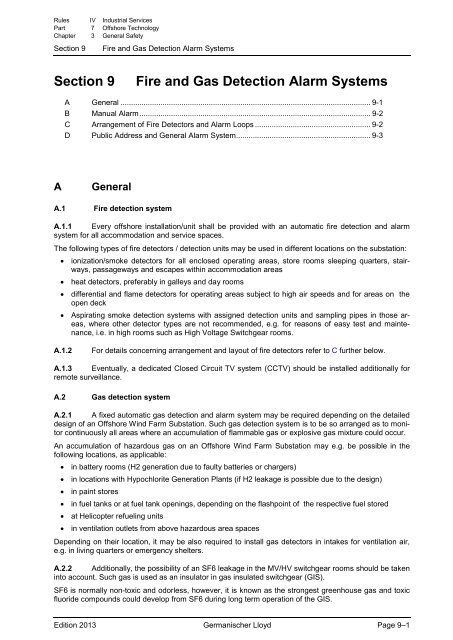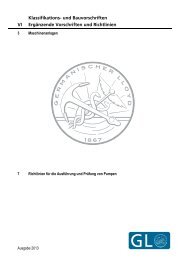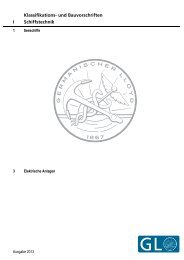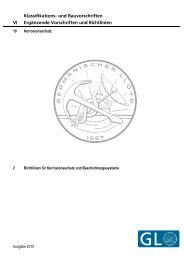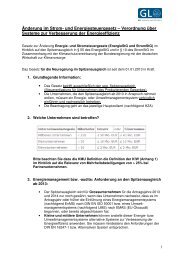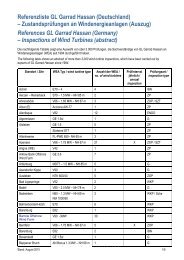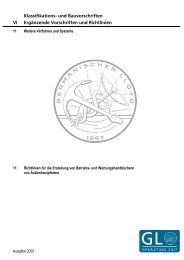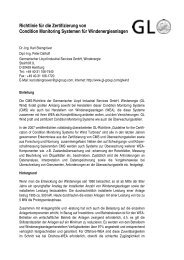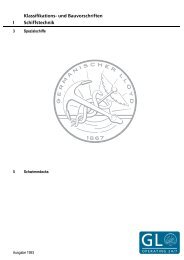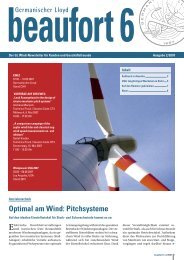(IV-7-3) General Safety
(IV-7-3) General Safety
(IV-7-3) General Safety
You also want an ePaper? Increase the reach of your titles
YUMPU automatically turns print PDFs into web optimized ePapers that Google loves.
Rules <strong>IV</strong> Industrial Services<br />
Part 7 Offshore Technology<br />
Chapter 3 <strong>General</strong> <strong>Safety</strong><br />
Section 9<br />
Fire and Gas Detection Alarm Systems<br />
Section 9<br />
Fire and Gas Detection Alarm Systems<br />
A <strong>General</strong> ....................................................................................................................... 9-1<br />
B Manual Alarm.............................................................................................................. 9-2<br />
C Arrangement of Fire Detectors and Alarm Loops ....................................................... 9-2<br />
D Public Address and <strong>General</strong> Alarm System................................................................ 9-3<br />
A<br />
<strong>General</strong><br />
A.1 Fire detection system<br />
A.1.1 Every offshore installation/unit shall be provided with an automatic fire detection and alarm<br />
system for all accommodation and service spaces.<br />
The following types of fire detectors / detection units may be used in different locations on the substation:<br />
• ionization/smoke detectors for all enclosed operating areas, store rooms sleeping quarters, stairways,<br />
passageways and escapes within accommodation areas<br />
• heat detectors, preferably in galleys and day rooms<br />
• differential and flame detectors for operating areas subject to high air speeds and for areas on the<br />
open deck<br />
• Aspirating smoke detection systems with assigned detection units and sampling pipes in those areas,<br />
where other detector types are not recommended, e.g. for reasons of easy test and maintenance,<br />
i.e. in high rooms such as High Voltage Switchgear rooms.<br />
A.1.2<br />
For details concerning arrangement and layout of fire detectors refer to C further below.<br />
A.1.3 Eventually, a dedicated Closed Circuit TV system (CCTV) should be installed additionally for<br />
remote surveillance.<br />
A.2 Gas detection system<br />
A.2.1 A fixed automatic gas detection and alarm system may be required depending on the detailed<br />
design of an Offshore Wind Farm Substation. Such gas detection system is to be so arranged as to monitor<br />
continuously all areas where an accumulation of flammable gas or explosive gas mixture could occur.<br />
An accumulation of hazardous gas on an Offshore Wind Farm Substation may e.g. be possible in the<br />
following locations, as applicable:<br />
• in battery rooms (H2 generation due to faulty batteries or chargers)<br />
• in locations with Hypochlorite Generation Plants (if H2 leakage is possible due to the design)<br />
• in paint stores<br />
• in fuel tanks or at fuel tank openings, depending on the flashpoint of the respective fuel stored<br />
• at Helicopter refueling units<br />
• in ventilation outlets from above hazardous area spaces<br />
Depending on their location, it may be also required to install gas detectors in intakes for ventilation air,<br />
e.g. in living quarters or emergency shelters.<br />
A.2.2 Additionally, the possibility of an SF6 leakage in the MV/HV switchgear rooms should be taken<br />
into account. Such gas is used as an insulator in gas insulated switchgear (GIS).<br />
SF6 is normally non-toxic and odorless, however, it is known as the strongest greenhouse gas and toxic<br />
fluoride compounds could develop from SF6 during long term operation of the GIS.<br />
Edition 2013 Germanischer Lloyd Page 9–1


